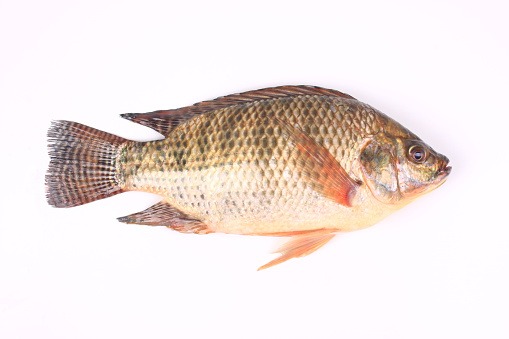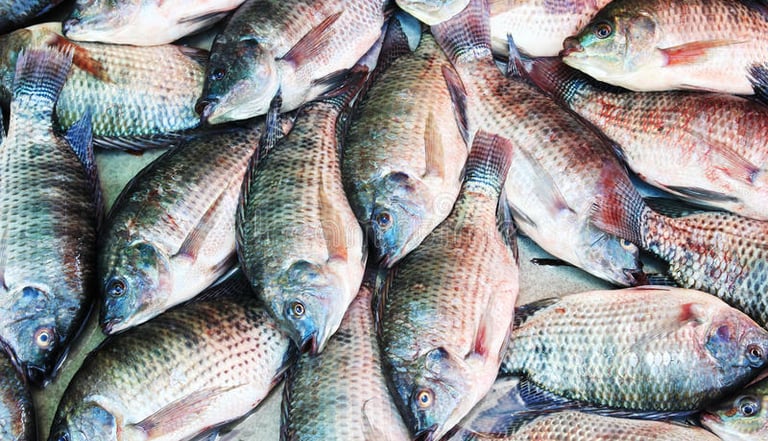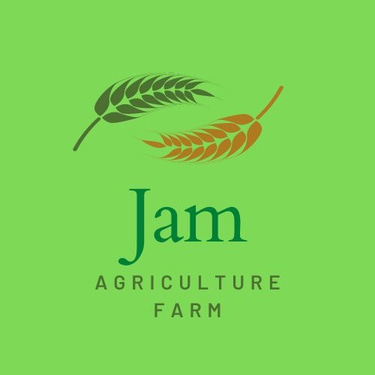Tilapia Dayo fish farming
Tilapia is the second most farmed in the world but in Pakistan its farming is limited. Tilapia fish is called "Dayo" in Sindhi and in Punjab, it's called "Chirra Machhli". The main advantage of tilapia fish farming is, that raising fish is very easy. Tilapia fish has very good demand in both domestic and international markets.
FISH FARMING
Tilapia/Daya Fish Farming
Tilapia is the second most farmed in the world but in Pakistan its farming is limited. Tilapia fish is called "Dayo" in Sindhi and in Punjab, it's called "Chirra Machhli". The main advantage of tilapia fish farming is, that raising fish is very easy. Tilapia fish has very good demand in both domestic and international markets. Tilapia fish can adapt themselves to a wide variety of climatic conditions. Tilapia fish grows very fast. Tilapia fish is very nutritious and tasty. Commercial tilapia fish farming is very profitable, and commercial tilapia fish farming can be a good business for unemployed educated people.
Tilapia fish have laterally compressed, deep bodies and their lower pharyngeal bones are fused into a single tooth-bearing structure. They are efficient feeders that can capture and process a wide variety of food items. The mouth of the tilapia fish is protrusible, usually bordered with wide and often swollen lips. The tilapia fishes have a long dorsal fin and a lateral line which often breaks towards the end of the dorsal fin, and starts again two or three rows of scales below. Some Nile Tilapia fish can grow as long as 2 feet.
The main reasons for the popularity of this fish include; low price, easy preparation and mild taste. The tilapia fish has become the third most economically important fish in aquaculture after carp and salmon because of the high protein content, large size, rapid growth rate and palatability of tilapia fish, they are the focus of major aquaculture efforts. Starting tilapia fish farming is very easy and simple. Tilapia is a fast-growing fish species, and diseases or other problems are relatively less, even beginners can also start growing them.
Health Benefits of Tilapia
Tilapia fish is a lean source of protein and also a good source of various vitamins and minerals.
Tilapia is a great source of minerals and vitamins. It is rich in niacin, vitamin B12, phosphorus, selenium and potassium. a 100 grams serving contains the following:
Calories 128, Carbohydrates 0 grams, protein 26 grams, Fats 3 grams, Niacin 24% of the daily recommended amount, Vitamin B12 31% of the daily recommended amount, Phosphorus 20% of the daily recommended amount, selenium 78% of the daily recommended amount, Potassium 20% of the daily recommended amount.
Consuming tilapia fish is good for bone health because it contains a good amount of phosphorus. Tilapia fish is high in the antioxidant selenium
Location
select a very good location for the fish farm. It will be better if the selected land is far from the residential area. Selecting a calm place which is free from noise will be good.
Production System
start growing tilapia in a variety of conditions like ponds, cages, raceways and also in tanks. But for commercial production, choose either ponds or tanks. The exact number of ponds or tanks for commercial tilapia fish production depends on your budget. The depth of the pond should be around 1.2 meters.
Nature of Tilapia
Tilapia fish can be found in ponds, lakes, marine habitats, watercourses, estuaries and seafaring conditions. They generally grow well in tropical conditions with water temperature ranges between 25°C and 30°C. Some varieties can also tolerate cold temperatures down to 8°C to 9°C.
Water Quality
Controlling water quality is very important for commercial tilapia fish farming. Tilapia fish can survive in dirty water. Bacteria, viruses, pathogens and other infectious organisms are harmful to the human body. So, avoid dirty water and always ensure fresh and good quality water.
Tilapia Species
There are numerous tilapia species available but all of these species are not good for commercial production. Some common, popular and economically important tilapia fish species are;
Abbassa & Akosomb: Hybrid from Nile tilapia.
Andersonii: Very tasty. Actually the best-tasting species with a small head.
BlueTilapia: Reach body weight between 2 and 4 pounds within a year.
Monosex Tilapia: It’s actually a hybrid. It grows very fast and can be grown twice a year.
Mozambique Tilapia: These tilapia can’t grow in cold or salty water. They can reach over 2 pounds in a year.
Nile Tilapia: Its growth rate is good. The fishes approximately reach between 1 and 2 pounds after five to seven months.
Rendalli: It’s an attractive species for the fish farming industry and is largely herbivorous.
Monosex Tilapia Farming
Monosex Tilapia has its own advantages such as a high degree of disease resistance, survival in adverse weather conditions and the ability to consume natural pond feed. As male tilapia grows faster and gains good weight compared to female tilapia hence it is considered to raise male tilapia by separating females and it's called monosex tilapia farming.
As the male Tilapia Fish is well adapted to supplementary feed and due to its rapid growth, there is huge profit in commercial monosex tilapia farming. Monosex Tilapia gains weight 200 to 250 grams in three months after stocking in a pond and selling of fish can be started. However, wait till the fish reaches a weight of 400-500 grams to get higher prices.
Stocking
Suppose, you have a pond measuring 40 meters long and 20 meters wide, and a water depth of 1.2 meters. Such a pond can hold around 960 cubic meters of water. around 10 tilapia fish per cubic meter can be stocked. So, an 800 square meter pond with a 1.2-meter depth is ideal for stocking and growing 9600 tilapia fish.
Feeding
Feeding the fish with very good quality and nutritious food is very important. The exact amount of food can vary depending on species, growing conditions and many other factors. On average, for commercial production, 1.7 kg of food is required for producing and harvesting 1 kg of meat. Currently, there are many companies available producing commercial feeds for farmers. Rice bran, oat groats, corn, canola meal, alfalfa meal, linseed meal and some vegetables are the best feed for Tilapia.
To grow natural feed, apply 600 kg of dung, 12 kg of urea, 100 kg of lime, 2 kg of MOP, and 6 kg of TSP per acre. The natural feed starts growing after one week of applying fertilizers. To constantly maintain the fish pond feed, apply 500 kg of dung, 3-4 kg of urea, and 2 kg of TSP after every seven days.
Breeding
Tilapia fishes are naturally very good breeders. They will breed easily and produce fingerlings if you give them the scope to do so.
Caring
Taking good care of the fish is very important for proper growth and maximum production. Along with feeding them good quality food, always try to take good care of them. Try to maintain water quality and also check their health on a regular basis.
Harvesting
harvest the fish when they reach harvesting weight. For large species, start harvesting when the fish reach around 400 grams of body weight. After harvesting, sort the fish depending on their size and try to sell them as soon as possible. Live tilapia fishes have very good demand.
Marketing
Marketing tilapia fish is very easy because it has a good market throughout the world. So, you don’t have to worry much about marketing. Probably, you will be able to easily sell your products in the local market.




